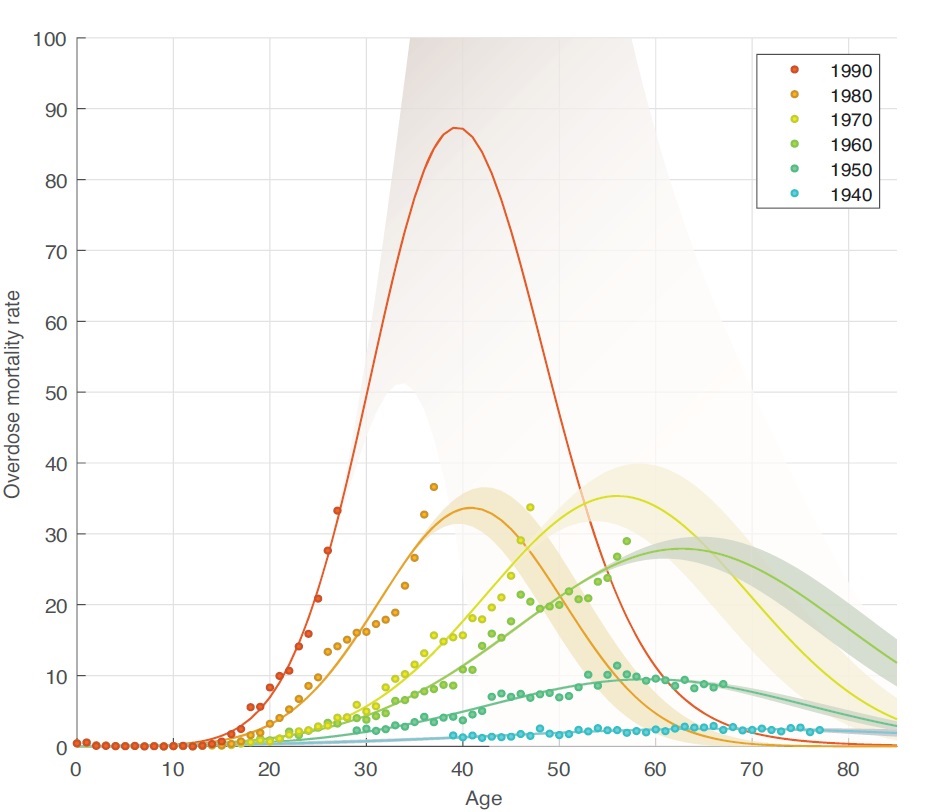New research from the Indiana University Kelley School of Business explains how pharmaceutical companies were able to saturate the country with massive quantities of opioids, despite efforts by the Drug Enforcement Administration to regulate their supply.
Tag: Opioid Epidemic
Study Identifies Pitfalls, Solutions for Using AI to Predict Opioid Use Disorder
Researchers examined peer-reviewed journal papers and conducted the first systematic review analyzing not only the technical aspects of machine learning applied to predicting opioid use, but also the published results.
Just over half of Michigan pharmacies offer overdose-fighting naloxone without prescription
Despite the ability of any Michigan pharmacy to dispense medication to combat opioid overdose without writing prescriptions, slightly more than half of pharmacies in the state offer the drug in such a way.
Is reducing opioids for pain patients linked to higher rates of overdose and mental health crisis?
A UC Davis Health study published in JAMA found a 68% increase in overdose events and a doubling of mental health crises among patients who were on stable opioid therapy but saw their doses tapered.
Researchers Test Model to Predict Drug Overdose Deaths in U.S.
Researchers at UC San Diego, San Diego State University, and international collaborators have designed and validated a prediction model to signal counties at risk of future overdose death outbreaks.
More evidence is urgently needed on opioid use in Black communities
Although the prevalence of opioid use among Black people is comparatively low, the rate of opioid deaths has increased the sharpest and fastest among that population in recent years, according to an article in the March/April issue of Harvard Review of Psychiatry. The journal is published in the Lippincott portfolio by Wolters Kluwer.
Experts to Discuss the Essential Efforts of Clinical Laboratories to Fight the Opioid Epidemic at the 2020 AACC Annual Scientific Meeting
The opioid epidemic has only gotten worse since the advent of COVID-19, with some areas in the U.S. reporting a 50% increase in drug overdoses due to the pandemic. With no end in sight to this public health crisis, scientific sessions during the virtual 2020 AACC Annual Scientific Meeting & Clinical Lab Expo will highlight the integral role of clinical laboratories in efforts to manage it, as well as the latest drug tests needed to do so.
Rutgers Experts Available to Discuss Purdue Pharma Guilty Plea
Rutgers emergency physician and opioid addiction experts are available to discuss Purdue Pharma’s guilty plea for its role in the nation’s opioid crisis. “This stark admission from Purdue Pharma demonstrates that it was a driving force for the nation’s opioid…
COVID poses hardships for people with substance abuse problems
Both fatal and nonfatal overdoses have increased this year compared to last, according to a recent report by the Overdose Data Mapping Application Program. And, anecdotal information suggests that compared to last year, people in recovery are relapsing at alarming rates.
Faculty from the University of Michigan School of Nursing’s Center for the Study of Drugs, Alcohol, Smoking and Health discuss why the pandemic has hit people with substance abuse problems especially hard and the expanded role of virtual recovery programs.

Young adults’ risks from first-time opioid prescriptions may not be as high as previously thought
Young adults and adolescents who are prescribed opioids for the first time may be at a slightly greater risk of developing a substance-related problem later in life, according to a new study co-authored by Indiana University researchers. However, the risk may not be as high as previously thought.

Tufts awards seed funding for work in prevention and treatment of opioid addiction
Tufts awards seed funding to 8 projects that seek to address the complex individual & community challenges wrought by the opioid epidemic. The inaugural awards of the Tufts Initiative on Substance Use and Addiction demonstrate a multidisciplinary drive to address this pressing public health crisis.
Linking Hospital and Other Records Can Predict Both Fatal and Nonfatal Opioid Overdoses, Study Suggests
A new study by researchers at the Johns Hopkins Bloomberg School of Public Health found that the odds of a fatal opioid overdose were 1.5 times higher for individuals with one to two visits to the emergency department for any medical issue than for people with no hospital visits.

Drug Overdose Epidemic is Transmitted from Old to Young, Study Shows
The generation a person was born into – Silent Generation, Baby Boomer, Generation X or Millennial – strongly predicts how likely they are to die from a drug overdose, and at what age. Within each generation, there was a steady march toward greater overdose risk at younger ages.
NOT JUST FOR BABY BOOMERS: Physicians Urge Hepatitis C Screening for Adults of All Ages
A risk factor for liver disease, cirrhosis and liver cancer, hepatitis C virus (HCV) infection is linked to the deaths of more U.S. patients than the next 60 infectious disease combined – including HIV and tuberculosis. Worryingly, its incidence is…
American Society of Anesthesiologists Launches New Podcasts
The American Society of Anesthesiologists (ASA) today announced the launch of two new monthly podcasts for physician anesthesiologists, the anesthesia care team, residents, medical students and anesthesiology community.
Recognize an overdose, save a life
Every day nearly 200 people die from an overdose of drugs or from alcohol poisoning, with opioids responsible for the majority. Recognizing the signs and knowing how to respond to medical emergencies, including carrying and administering naloxone in cases of opioid overdose, can save lives says the ASA.
Opioid Dependence Found to Permanently Change Brains of Rats
Approximately one-quarter of patients who are prescribed opioids for chronic pain misuse them, with five to 10 percent developing an opioid use disorder or addiction. In a new study, UC San Diego researchers found that opioid dependence produced permanent changes in the brains of rats.

American Chiropractic Association Launches Website to Enhance Public Understanding of Chiropractic
Hands Down Better, a website launched by the American Chiropractic Association (ACA), is a new resource for those who seek alternatives to pain medications and surgery for common musculoskeletal conditions such as back pain, neck pain, joint pain and headaches.
STUDY REVEALS URBAN HOTSPOTS OF HIGH-SCHOOLERS’ OPIOID ABUSE
A new study from researchers at the Johns Hopkins Bloomberg School of Public Health found that in several cities and counties the proportion of high-schoolers who have ever used heroin or misused prescription opioids is much higher than the national average.

UK Student, Military Researcher Explores Ways to Prevent Chronic Pain
Inspired by his time working for the Air Force and caring for wounded veterans, University of Kentucky College of Health Sciences doctoral candidate Josh Van Wyngaarden now studies ways to prevent chronic pain in those who have suffered traumatic leg injuries.

IU experts available to comment on on Ohio counties settlement with four drug companies on the eve of the federal trial
Two Ohio counties settled with four drug companies on the eve of a landmark federal trial over responsibility for the opioid epidemic.The $260 million deal emerged just an hour before opening arguments were to begin Monday. Indiana University expert Nicolas…
New Opioid Prescription Dosages Drop 22 Percent in Penn Medicine’s New Jersey Practices Following Changes to State Law and Health Record Alerts
The total amount of opioids dispensed per new opioid prescription decreased by 22 percent in Penn Medicine outpatient practices in New Jersey after the state passed a law limiting prescriptions to a five-day supply for new opioid prescriptions. Penn Medicine implemented an electronic health record (EMR) alert, or “nudge,” to notify clinicians if that limit had been reached. The study, published online today in the Journal of General Internal Medicine, is one of the first evaluations of a state law’s impact on prescribing outcomes, and is the first report of an EMR being used to make compliance with prescribing limits easier. Importantly, after the prescribing limit and alert went into effect there was no evidence to suggest pain control worsened.
UCLA to lead $25 million opioid study in rural America
Scientists from the UCLA Integrated Substance Abuse Programs will lead a $25 million National Institutes of Health study testing treatments, including the use of telemedicine, to help fight the opioid epidemic in rural America.